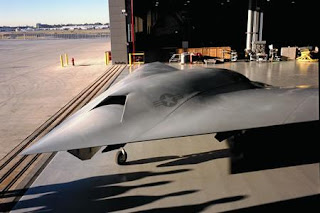Abraham Gubler said:
To create a ‘heavy jamming’ environment that would promote more visual ATA engagements (ie dogfighting) would mean enough jamming to blank out radars of fighters, AEW&C, etc. This is an awful amount of jamming especially considering the huge improvements in radar capability brought about by electronic scanning.
Actually, it can be argued that such radars are even more vulnerable to heavy jamming environments, whether created by pure 'brute force' jammers or a mixture of such jammers and deception jammers, not to mention they aren't by no means the only way to create heavy EMI environments that can clobber a radar system (among other things), electronically scanned or otherwise. It's easy enough to jam an enemy's sensors and comms, especially if you're willing to accept tradeoffs with your own long range tracking, targeting and communications capabilities. Even systems with plenty of raw power in reserve like Ageis can be blinded, although deception jammers and the like might be a better choice in their case.
Part of this problem is applying a AI target recognition through one medium in a complex ground environments compared to a human without any other workload as to meaning all computer controlled target recognition is limited.
However when you link several AI mediums together into a syndicate and in a relatively simple environment (ATA) you find that they can work very effectively, ie AI visual, AI radar, AI IR, etc.
In theory. Agent based systems like you describe have not yet lived up to their initial promise, although there have been promising experiments in using them in automated logistics and communications chains. Co-ordination and fusion of data have being among the problems encountered. Another major problem with Agents is that they can have rather heavy system requirements, although to be fair, most of the recent experiments I've heard/read about were using Java (or similar) language based Agents. By the way, ATA as a simple environment? What do you consider as a complex one?
An AI system analysing a target across multiple spectrums with reference to a library when the target is as simple as an aircraft in the air compared to a human who is also busy trying to fly a plane and fight a battle and one can be thankful you don’t have to rely on gut feelings.
Simple in theory, not nearly so in practice. Pure library based systems i.e. Expert Systems still have a number of major drawbacks even with recent advances. Even very advanced A.I systems using such elements as neural nets and fuzzy logic routines still have problems properly analysing and dealing with complex situations in less than ideal conditions. The best approach would still seem be agumenting human aircrew with advanced AI systems. The basic approach that you avocate would only likely properly work in an environment where all data on the enemy and battlefield conditions was available (sound familar?)
and the proper course of action was in memory or could be computed based on available data. That sort of clarity rarely happens in combat conditions. Often instinct and gut feelings are all you have in a uncertain situation, e.g. whether to get in to a fight or not in the first place.
Which is of course a lot more to do with current ROEs and legal restrictions placed on combat forces more than actual capability. In actual US forces thinking about real UCAVs in non permissive environments they are thinking autonomous warfare. And have even trailed and demonstrated this capability – which was what the X-45 was all about. Just because the practice of fighting terrorists with Predators – most of which aren’t even flown autonomously – means a human in the loop at all times does not mean the same with the next generation.
I'd disagree with you there. I don't think that the (pretty limited) tests done using the X-45 would prove your point at all. In fact, those tests were mostly simulated SEAD missions, weren't they? The technology for successful autonomous SEAD drones (or DEAD as the Air Force has being trying to rename it) has being around since at least the late 80's.
Ahh the magic of SEAD. Of course a UCAV is able to fight SEAD by itself but not any other mission? Because that preserves the jobs of fighter pilots in all those other areas apart from that one really hard and inglorious mission.
SEAD tends to be heavy on one's aircraft and UCAVs are
supposed to be expendable. And most SEAD missions are simple enough, at least until the enemy gets wise!
We don’t expect this kind of capability from our fighter pilots while inside the cockpit so why should we expect it of out UCAVs? We don’t send them into the air to write friggin poetry they are there to complete a mission. They also won’t be alone because unless someone starts throwing nuclear warheads around the battlefield we are going to maintain more than enough bandwidth to talk to fighters and give them advise – be they manned or unmanned.
In order to complete said mission, aircrew are expected to able adapt and improvise as with regards to changing conditions on the fly, and that's just the weather! And if even the US can't currently guarantee sufficient communications bandwidth for it's forces (ironically due in part to demands of /interference from, UAVs/UGVs) in relatively low level conflicts like Iraq and increasingly Afganistan, what makes you think they'd be able to do in a major conventional war? Not to mention communications jamming in the digital age is much easier than you seem to think. Hint: think protocols.

